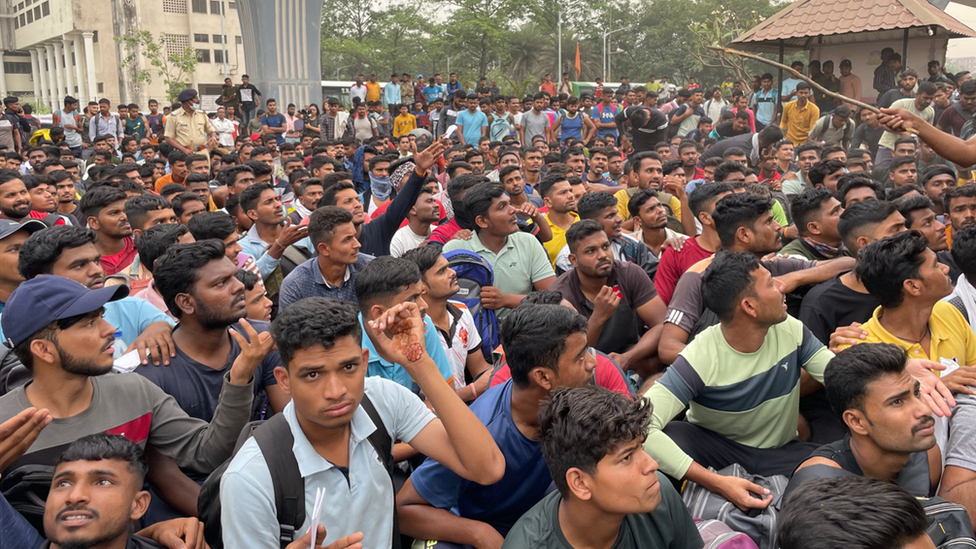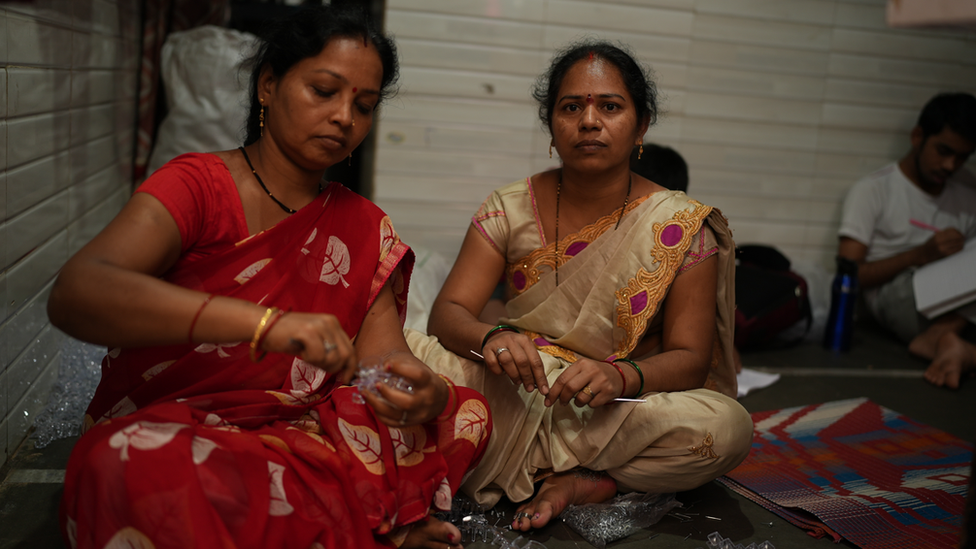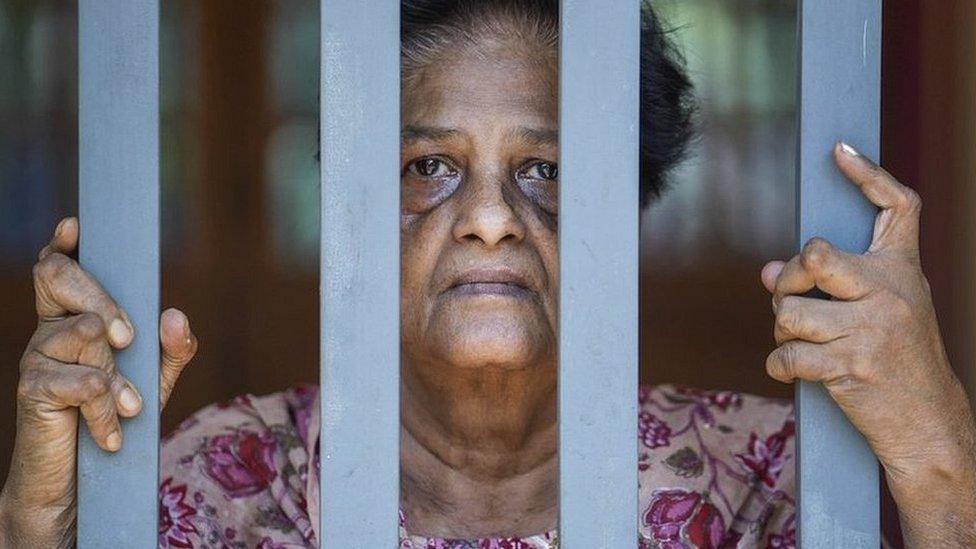India population: The job crisis driving millions to big cities
- Published

India is set to overtake China as the most populous nation in the world
India is in the throes of a massive move to its cities - the second largest rural to urban migration, external in human history.
This demographic disruption is under way as the country is set to overtake China to become the most populous in the world - the UN projects that will happen by the middle of this year.
Experts say that India's new status highlights its demographic dividend as the nation with the largest number of young workers - but also its biggest challenge: creating enough jobs for them.
And that's what's fuelling the migration - people don't make enough money in the villages, so they're streaming out of the countryside by the tens of millions, driven by hope and desperation to seek better opportunities in big cities.
In India's financial hub Mumbai recently, a crush of young men surged forward as policemen waved batons and called for order.
The candidates had come from all over the state seeking a coveted spot in the police force. Competition was fierce: there were 650,000 applicants and only 8,000 positions.
That's why Sunil Bamble was trying for a third time, he'd travelled more than 200km (124 miles) for another chance.
"If I get this job my life will change because I will receive a fixed income," he told me, raising his hand in a prayer for success as he finished his paperwork. "I will have job security. I'll be able to get married."
That kind of anxiety is reflected in a UN report released this week. It noted that 63% of Indians were most concerned about economic issues when it came to population-related matters.
The country's economy is growing at a fast pace, creating a big market for the world. But its rate of unemployment stands at a high of 8%, according to the Centre for Monitoring Indian Economy (CMIE), an independent think-tank.

Sunil Bamble is among thousands of Indians who dream to secure a government job
That's especially true among young people who get an education but not the kind needed to keep up with the boom in high-end services, like software and finance, which are powering that growth.
Hence, they aim to get secure government positions, such as in the police force.
If Mr Bamble doesn't get that job of his dreams, he says he'll still move to the city, even though it will be a hustle. "There are many more options for employment, but also more hardships," he says.
"I'll have to pay much more for things here than I do in the village and I won't be able to live comfortably," Mr Bamble adds. "But I'm ready to move here."
That's a gamble many in the suburb of Nala Sopara have made. It's a migrant community on the outskirts of Mumbai that's grown by 200% in the past 20 years.
In a low-income housing area, washing hangs from the windows in narrow alleyways and children cluster around the doorways.
Inside some of the darkened rooms, women are twisting together coils and plastic, making hair clips. It's modest work - but helps them earn a living.
"I can buy myself what I want," says 33-year-old Ranjana Vishwakarma, with a laugh. "I can buy myself a sari! Or I can get something that my child needs - a book or something for school, like a pencil or eraser. I no longer need to depend on my husband for everything."

Ranjana says that she is happy she earns enough to afford the things she wants
Her son sits quietly in the single room they share alongside a kitchen, studying. She has lived this way for 10 years, but believes he'll have a better future than she did.
"He is getting his education in the city so he will make something of it," she says, "get a job and move forward in life."
Her neighbour Vishal Dubey comes from the same northern Indian state of Uttar Pradesh.
He works as a salesman for an internet company which involves tough 12-hour days with long commutes. But he's able to help out his father, who drives a rickshaw, and pay for his mother's medical bills. Recently he registered to buy a house, for which he will pay in instalments.
These are "small dreams," he's able to fulfil, but he also dreams big.
"I hope I'm able to earn so much that I'm able to help people in my home-town," he says. "I want my village to become rich, so that the people of my village don't have to become migrants and move to the city. They shouldn't have to face the struggles I'm facing."
But that might be a dream out of step with India's reality. It's estimated that at least 800 million Indians will live, external in urban centres by the middle of the century, which would be more than half of the population.
How India manages to keep pace with the hopes - and despairs - of its people will largely be determined in the country's teeming cities.
BBC News India is now on YouTube. Click here, external to subscribe and watch our documentaries, explainers and features.

You might also be interested in:
WATCH: The crushing pain of India's job seekers

Read more India stories from the BBC:

Related topics
- Published20 December 2022
- Published27 March 2023
